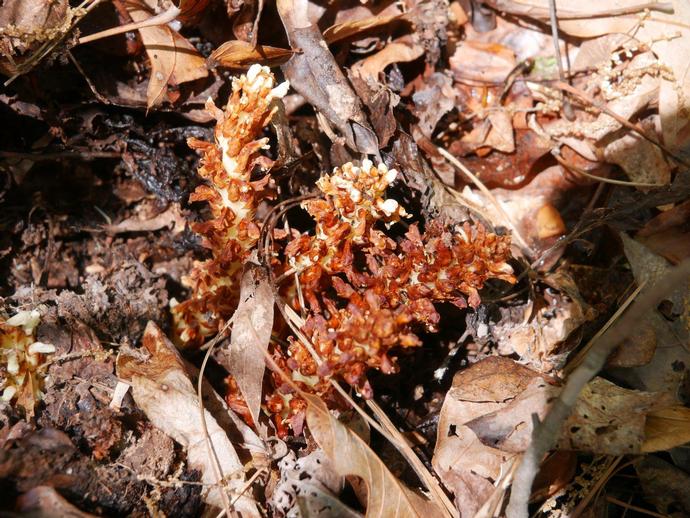April 22, 2020
As little kids, we're taught that plants have a green pigment called chlorophyll that absorbs sunlight and converts it into energy. While that's true for most plants, there are actually about 3,000 plants around the world that don't rely on the sun to get their energy.
One of several examples that you can find in the woods here in southwest Virginia is Conopholis americana, also known as cancer root, squaw root, or bear corn. This plant doesn't have chlorophyll; instead, it's a parasitic plant that attaches to the roots of oak trees and beech trees, producing small suckers that leech nourishment from the host tree. Since this plant doesn't photosynthesize, it has no need for leaves. In the spring, it produces spikes of cream-colored flowers (in the case of the pictured plant, those flowers have mostly withered and turned brown; unfortunately, I missed it while it was in full bloom).
There are a few other plants in the woods of Virginia that don't bother with chlorophyll, such as the striking white Indian pipe (Monotropa uniflora). If I manage to find any, rest assured, you'll see them on our Facebook page soon! #BenInNature
About this post: Social distancing can be difficult, but the next few weeks present a great opportunity to become reacquainted with nature. While he is working from home, Administrator of Science Ben Williams is venturing outdoors each day to record a snapshot of the unique sights that can be found in the natural world.
This post brought to you by VMNH Corporate Supporter Everything Outdoors, LLC.

 Hours & Admissions
Hours & Admissions Directions
Directions

